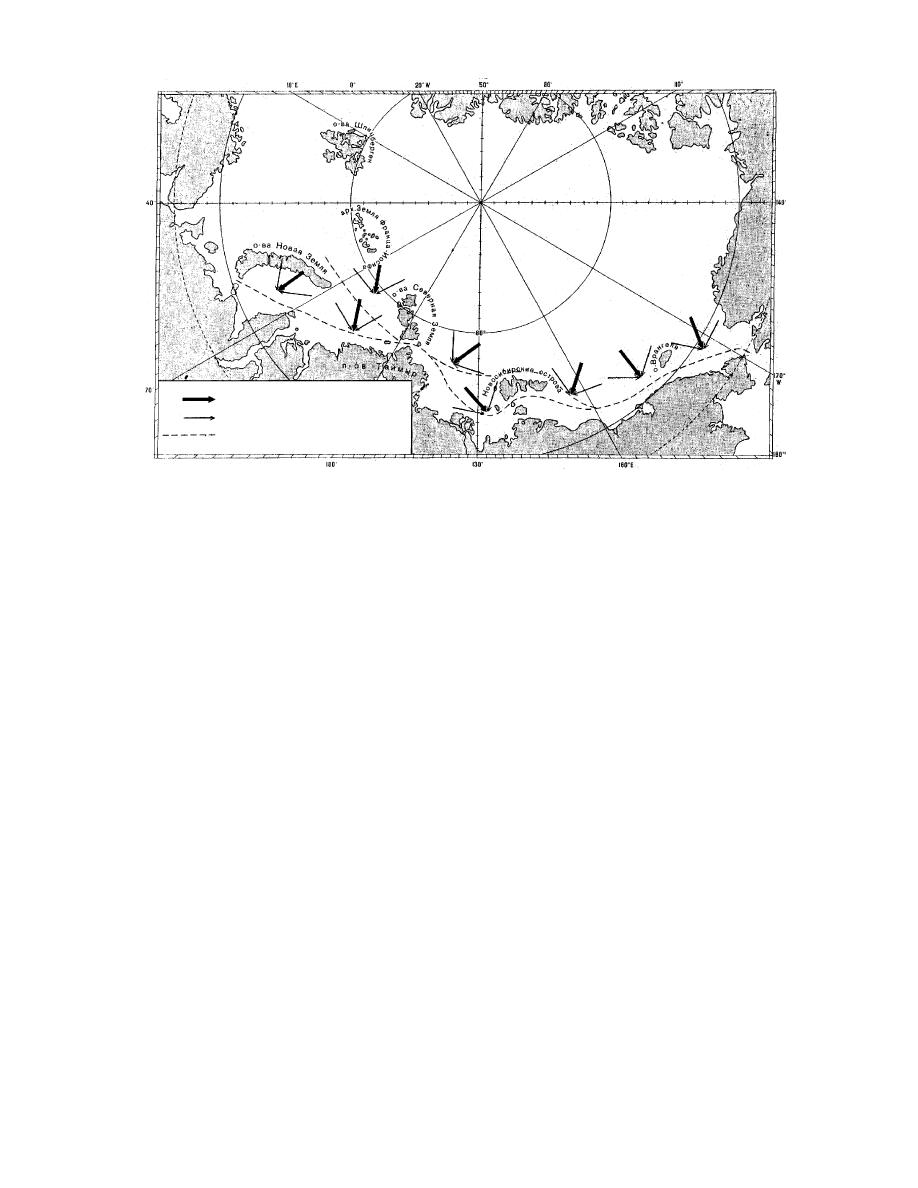
Direction of Air Currents
Sector Limits
Navigation Routes
Figure 23. Location and ranges of wind directions that tend to create compacted ice conditions that are
generally unfavorable for navigating along the NSR. (Translated from RSMOT, in prep.)
The Dmitriya Lapteva Strait, a west-to-east trend-
est point. The minimum depth of the fairway is
ing passage from the Laptev to the East Siberian
reported to be greater than 25 m. RSMOT (in prep.)
Sea, is the strait most often used by ocean-going
states that the depths are generally 100 to 200 m,
traffic between these two seas. It is 63 nm long and
except in the western approach where they are
30 nm wide and separates the Novosibirskiy ar-
"somewhat less." It appears that depth through-
chipelago from the Russian mainland. Although
out this strait is not a limiting factor for vessels of
the western part of the fairway is deep and clear
any size. A northeast current of 1.5 kn normally
of submerged obstacles, the eastern portion has
prevails in the strait but it can increase to 3 kn on
several areas that restrict traffic to vessels with
a southwest wind. Ice conditions are highly vari-
less than 6.7 m draft. This strait reportedly is not
able in terms of location and can change rapidly,
penetrated by heavy Arctic ice and that which is
depending on the wind. The wind primarily deter-
found there is only of the first-year variety. Navi-
mines the direction and velocity of the ice drift.
gating this strait during August and September is
West winds create difficult ice conditions in the
usually not difficult except during exceptionally
western approach. Winds from other directions are
cold years. RSMOT (in prep.), however, states that
generally more favorable. Figure 23 shows the gen-
ice conditions in the vicinity are complicated and
eral range of wind directions that create more dif-
a principal hindrance to navigation. Passage is of-
ficult navigational conditions along the entire NSR.
ten only possible under icebreaker escort. Winds
The Shokal'skogo Strait, a passage between the
during July to September are relatively calm, av-
Kara and Laptev seas that trends southwest to
eraging 38 m/s. East winds are the most settled
northeasterly, is 80 nm long and 10 nm wide at its
and last from 1 to 10 days. The number of stormy
narrowest point. Depths within this strait are not
days, with winds as high as 30 m/s, average 3 to 4
a limiting factor for shipping, as the minimum
depth, which lies at the southwest entrance, is 37
days per month in the western part of the strait
and 1 to 2 days per month in the eastern part.
m. Due to ever-present challenging ice conditions,
Visibility is obscured by fog 15 to 19 days per
Russian pilotage is mandatory for all ships using
month in July and August, decreasing to 8 to 12
this strait. Severe magnetic variations of up to
54E have been observed here.
days in September. The semidiurnal tidal fluctua-
35



 Previous Page
Previous Page
